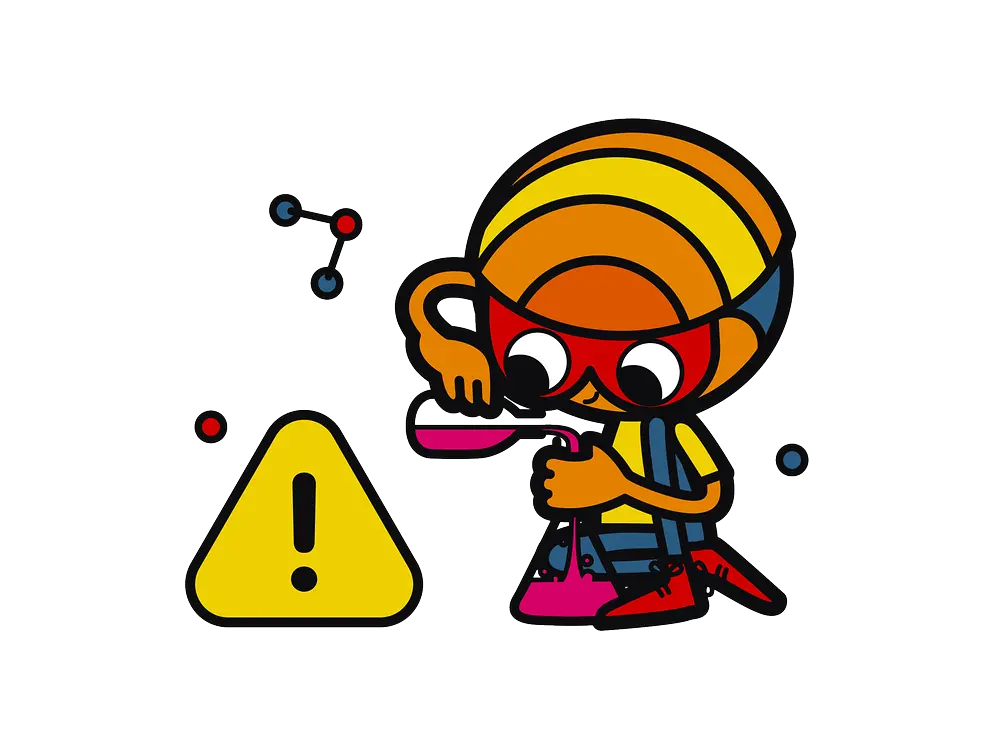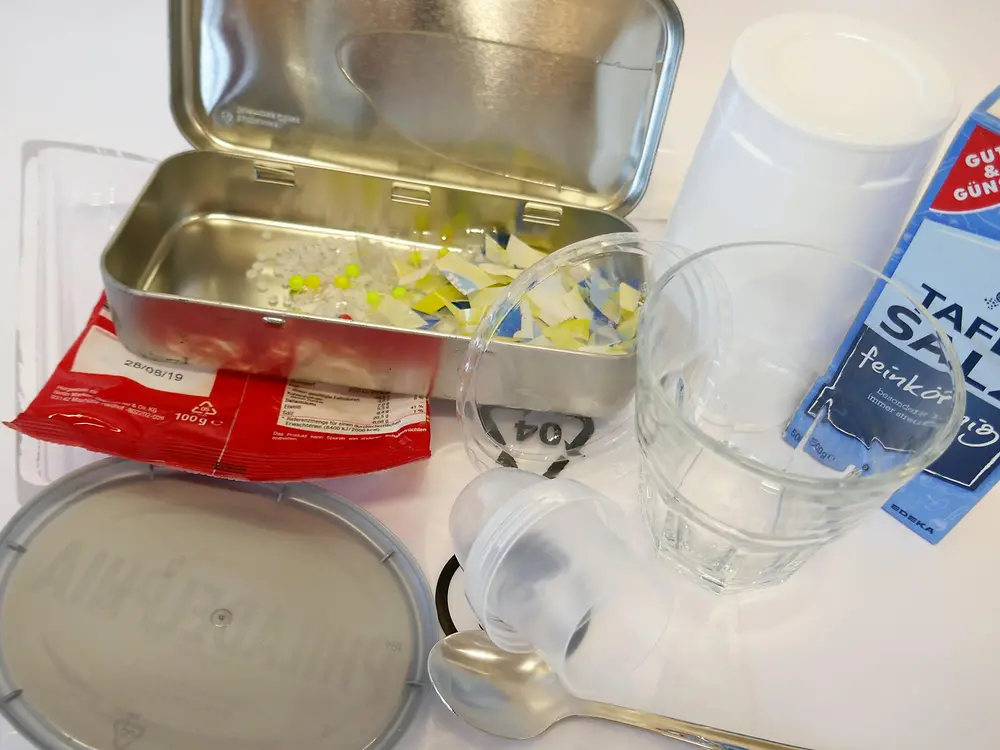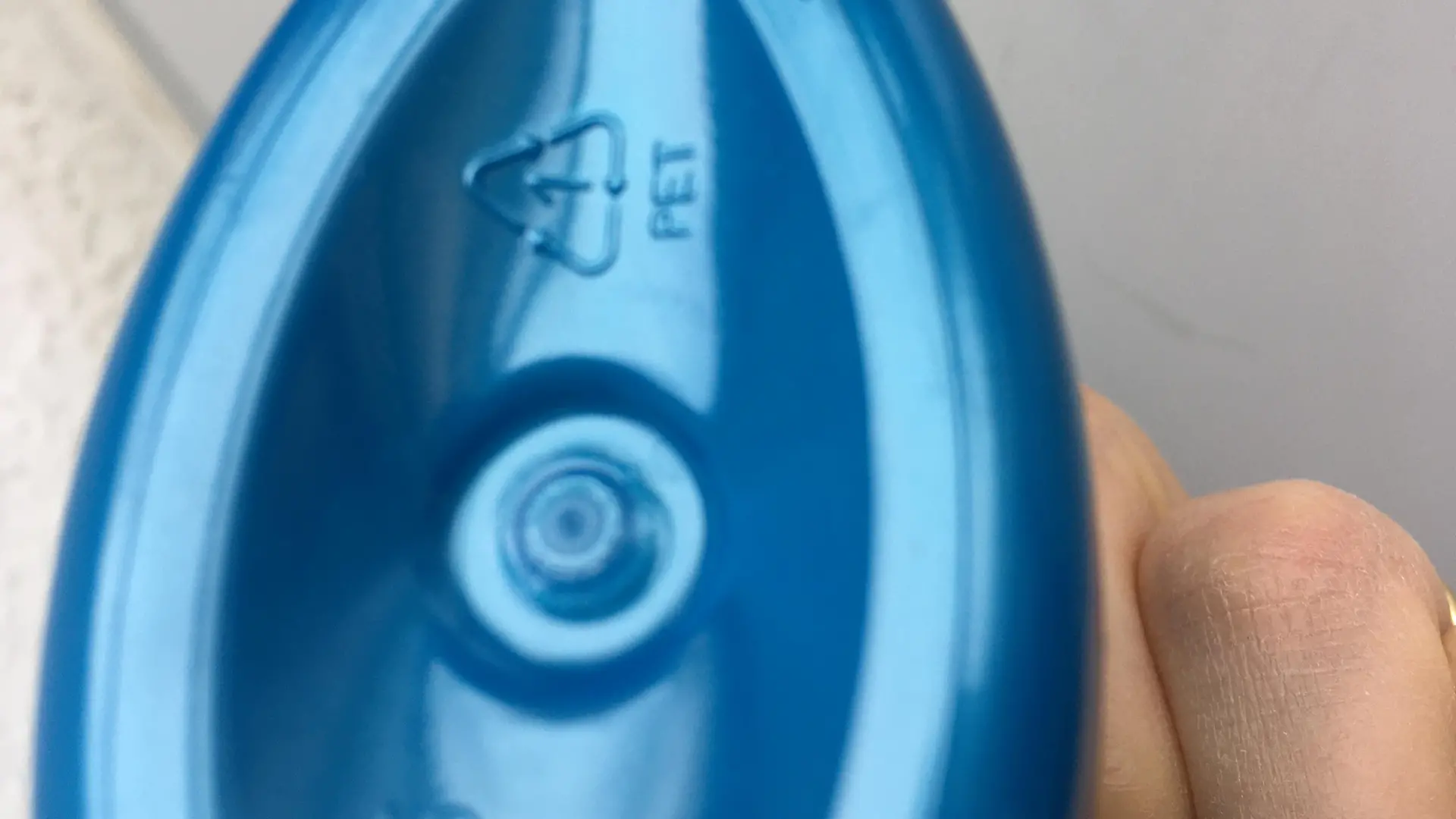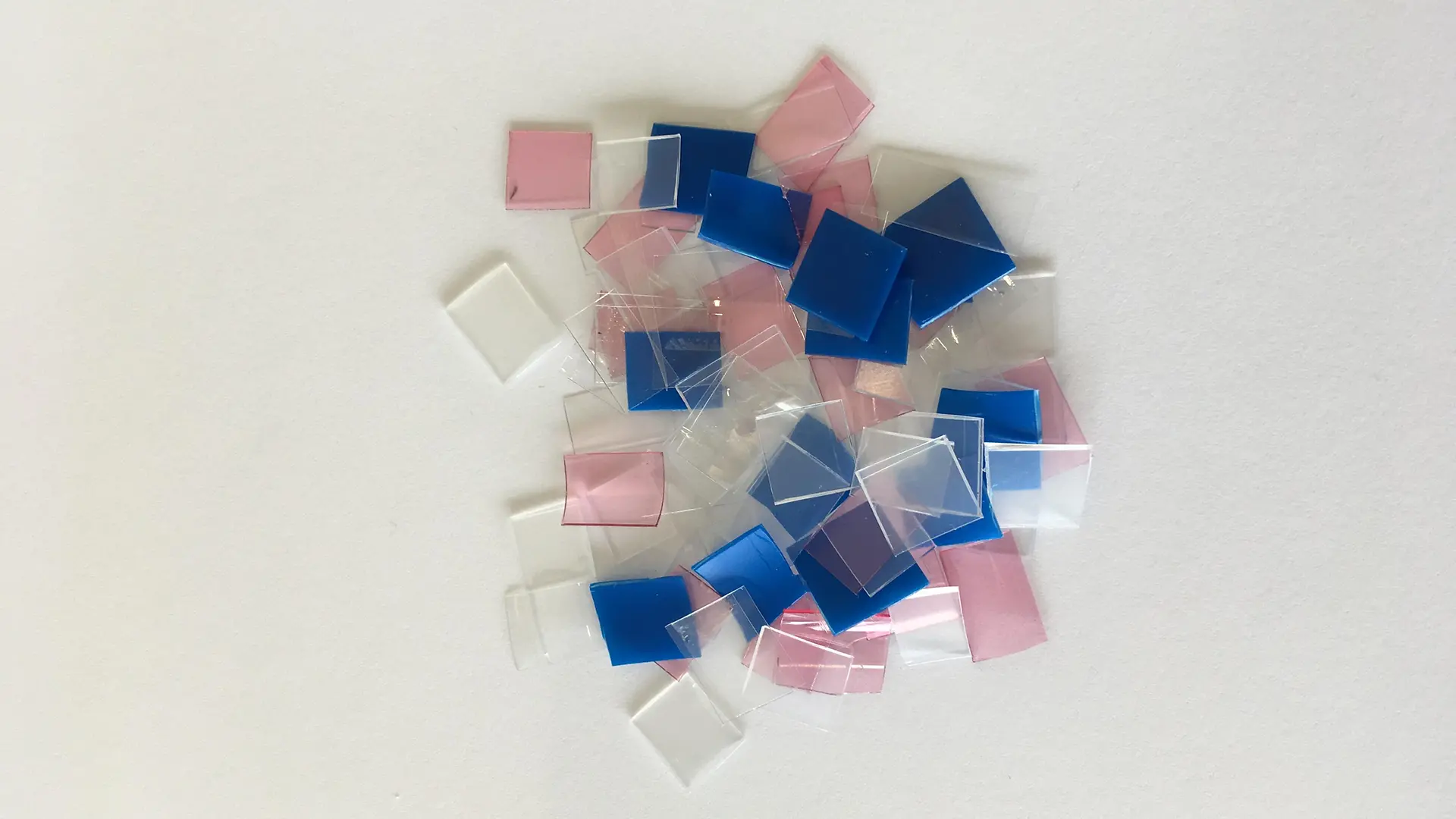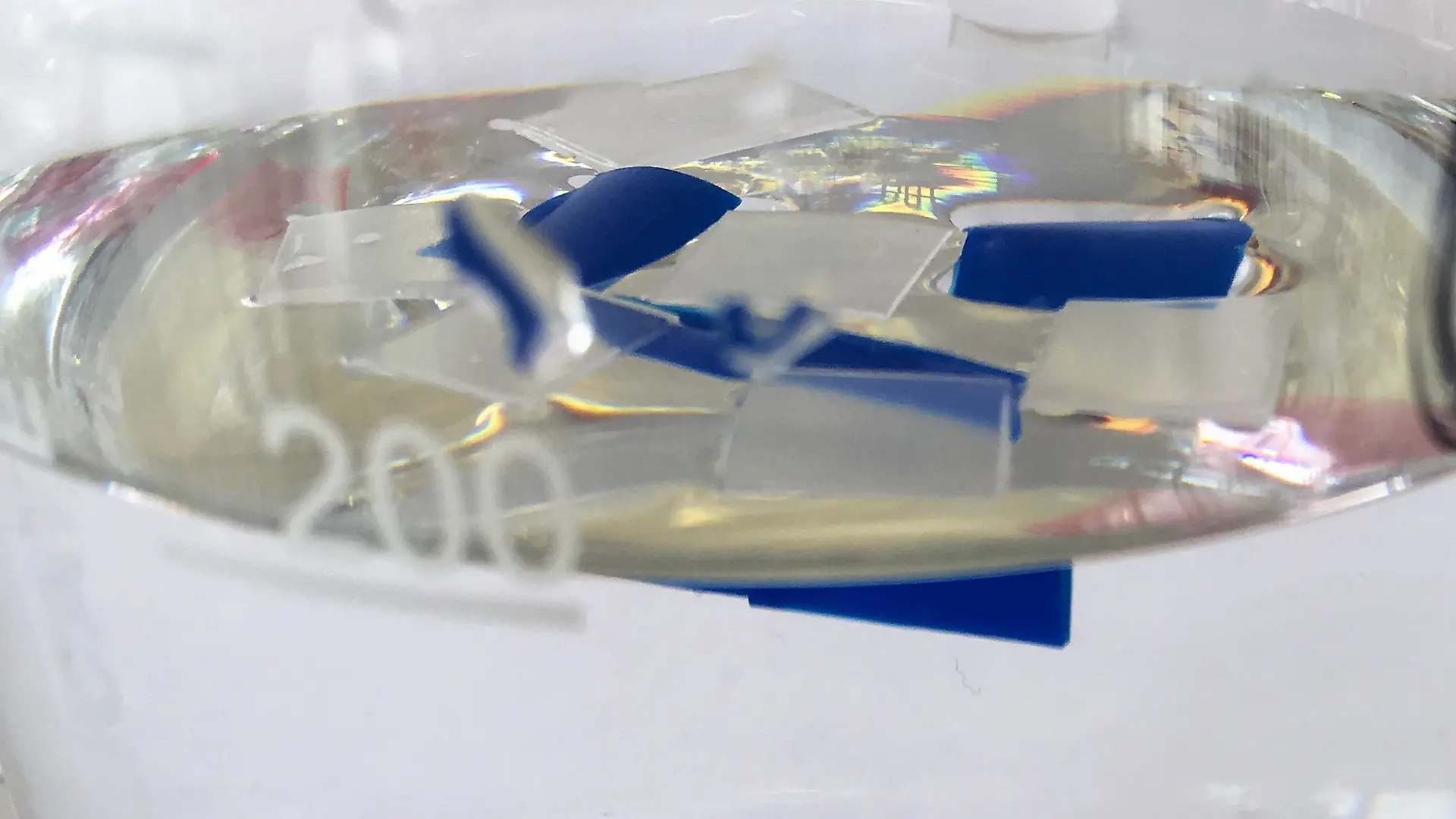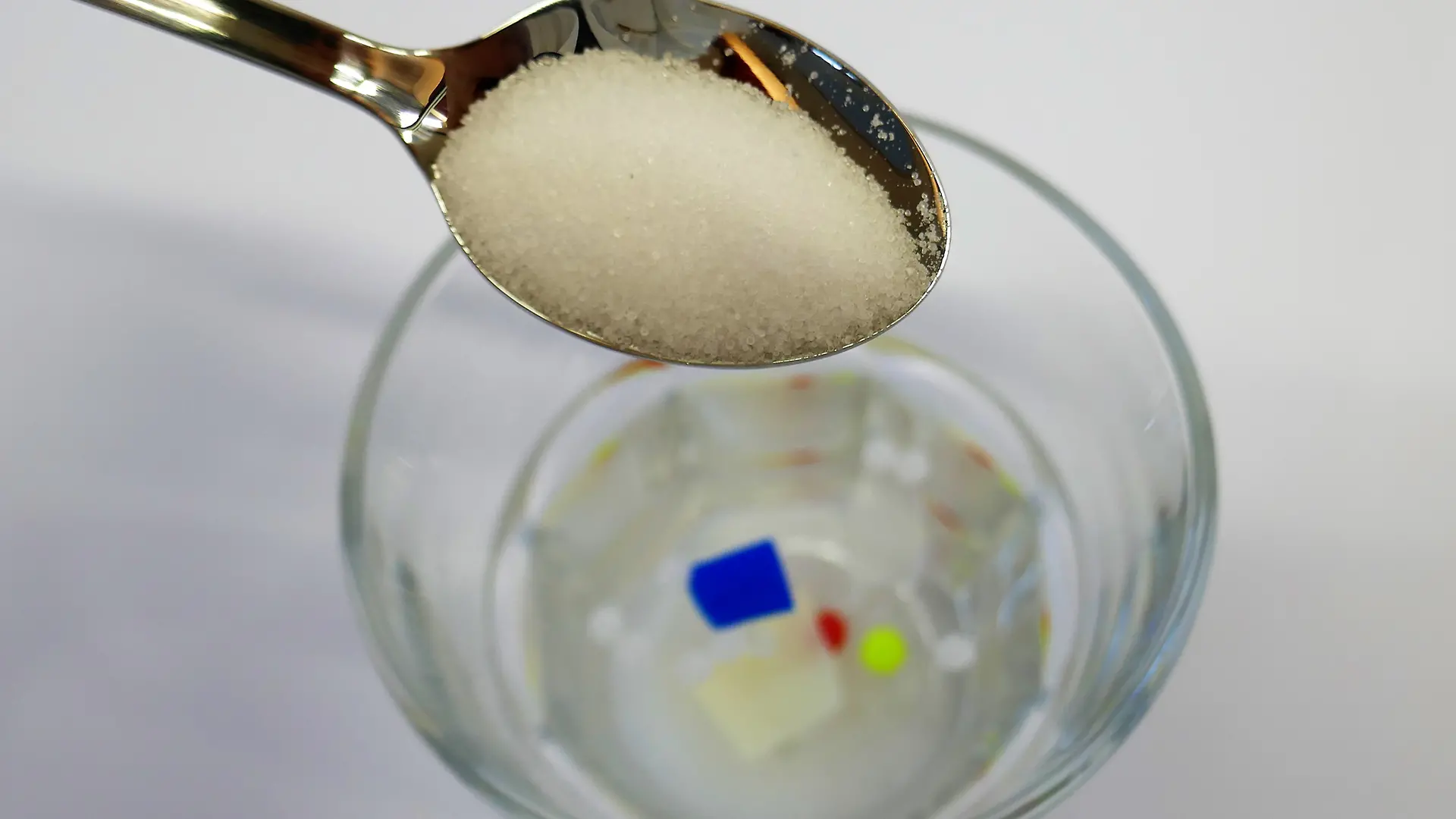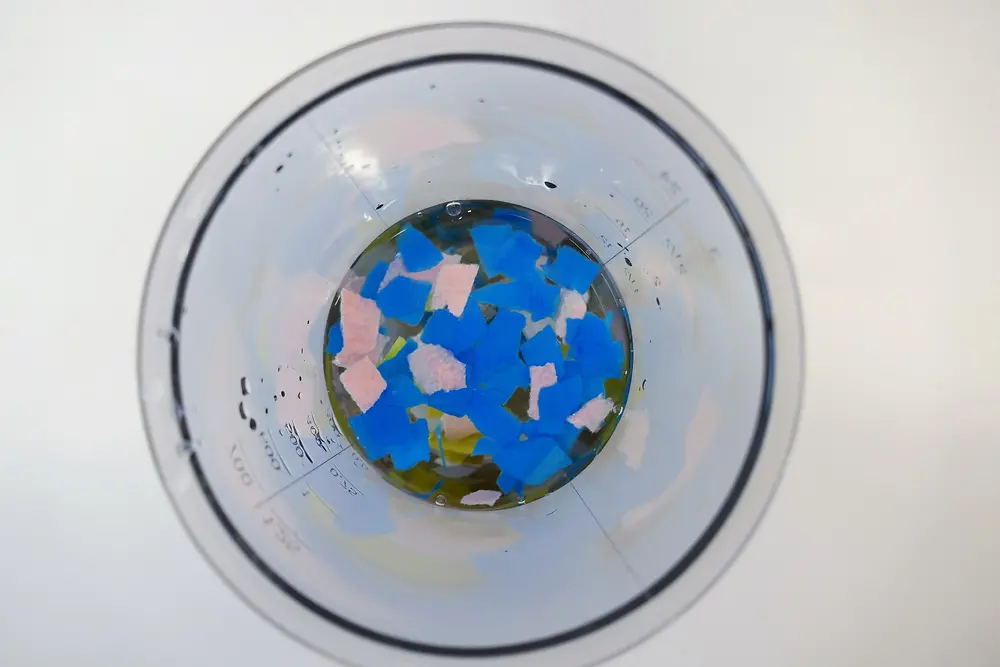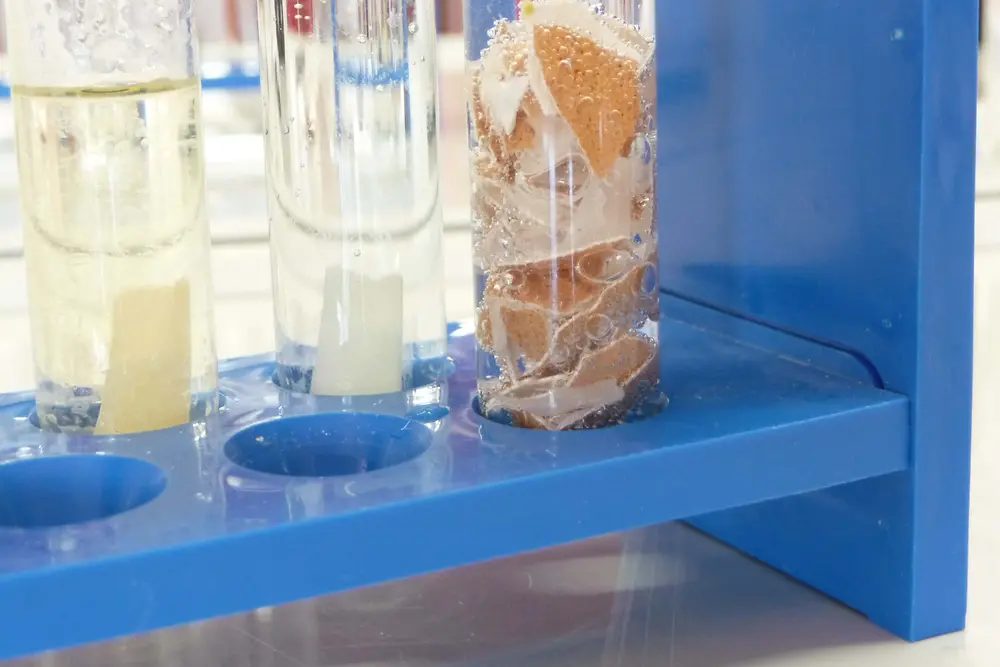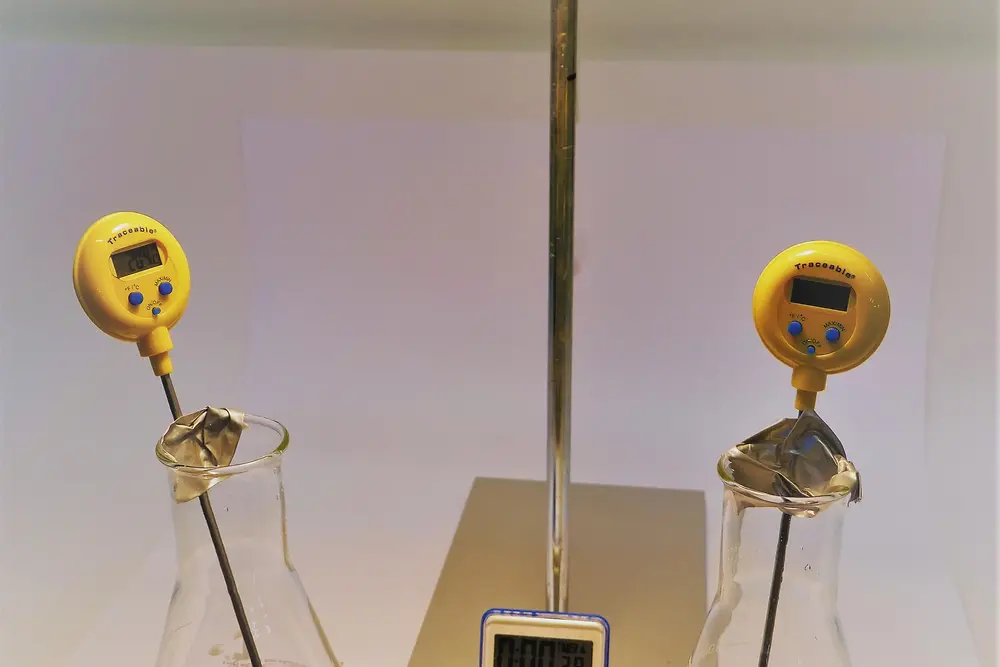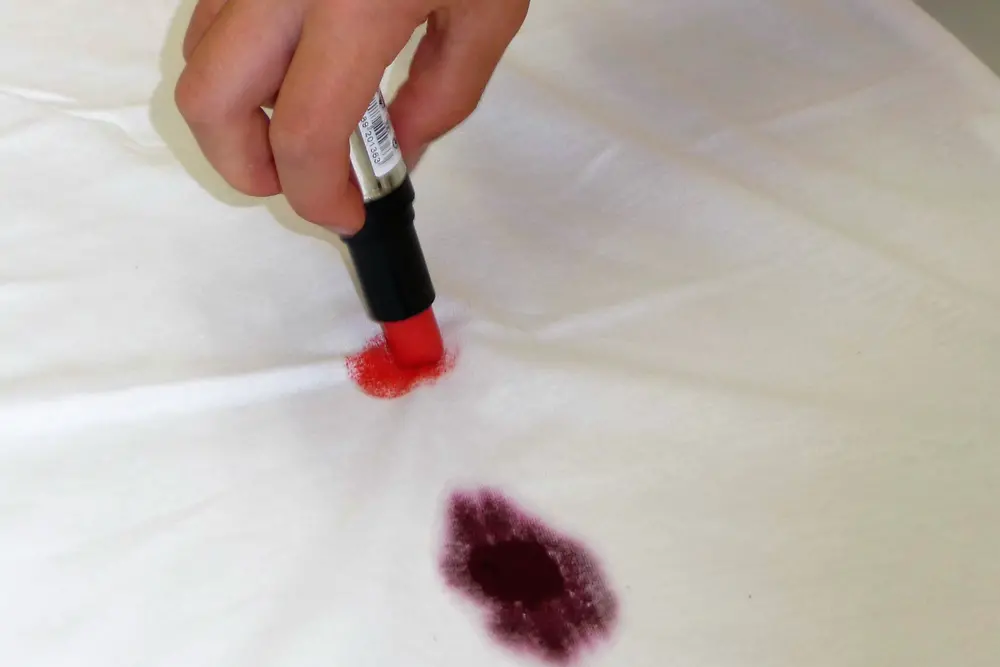It is best to avoid packaging waste altogether. If that is not possible, we should reduce, separate and recycle the waste as much as possible. To do this, we throw plastic packaging waste into specific garbage cans. During subsequent recycling, the different types must first be separated. But what types of plastic are there? And how does the separation process work?
What are the different types of plastic and how can they be separated?
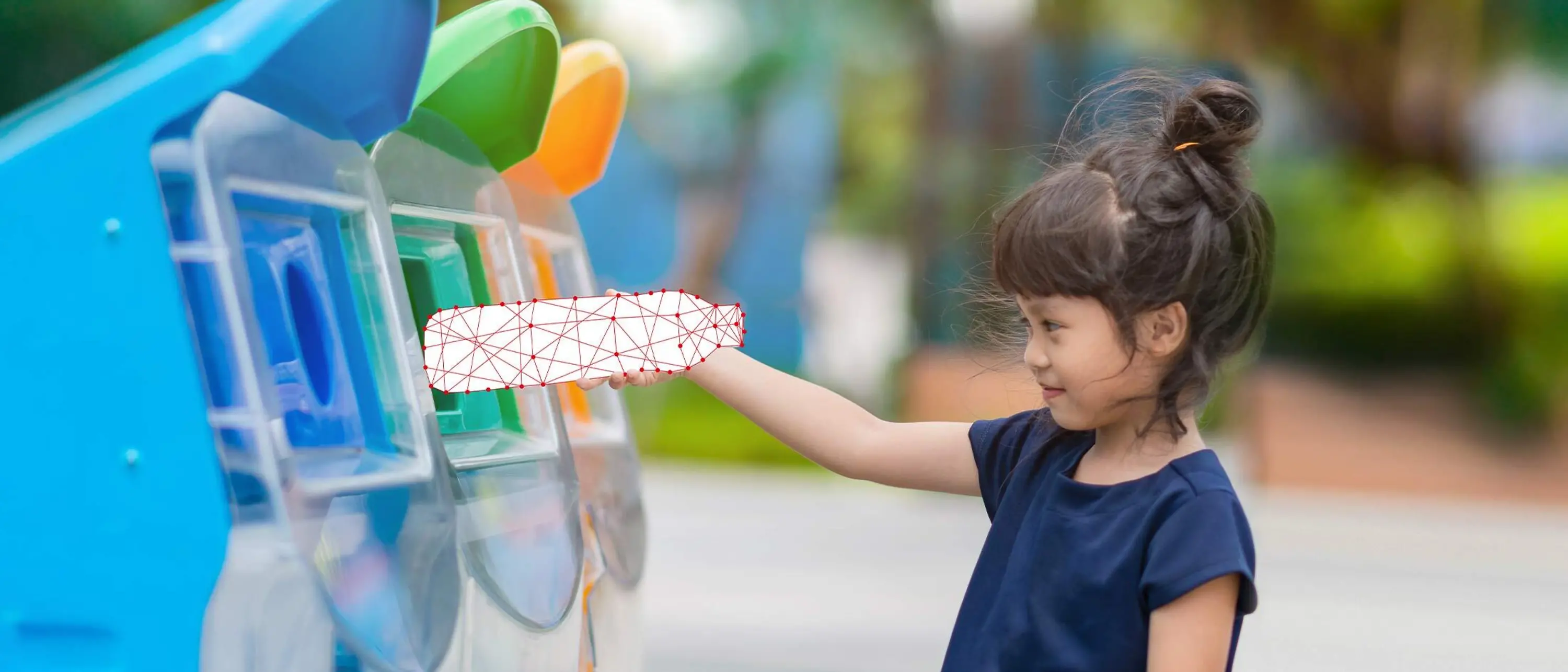
You will need
- A collection of empty plastic packaging
- Small pieces of plastic made of PET, PE, PS and PVC materials
- Drinking glass
- Spoons
- Table salt
Let’s get started!
Why do some pieces of plastic float on the water, and why do some sink?
Answer:
This is due to the different densities of the substances: The greater the density, the less space (volume) a certain amount (mass) of the substance requires. A 100-g bar of chocolate is quite small. In contrast, 100 g of cotton candy is quite a big pile. If a plastic has a smaller density than water, it floats on the water. If a plastic has a greater density than water, it sinks. Here, we change the density of the water by adding salt. The more salt added, the greater the density of the saltwater. When the saltwater reaches a greater density than one of the sunk pieces of plastic, the piece will start to float.
